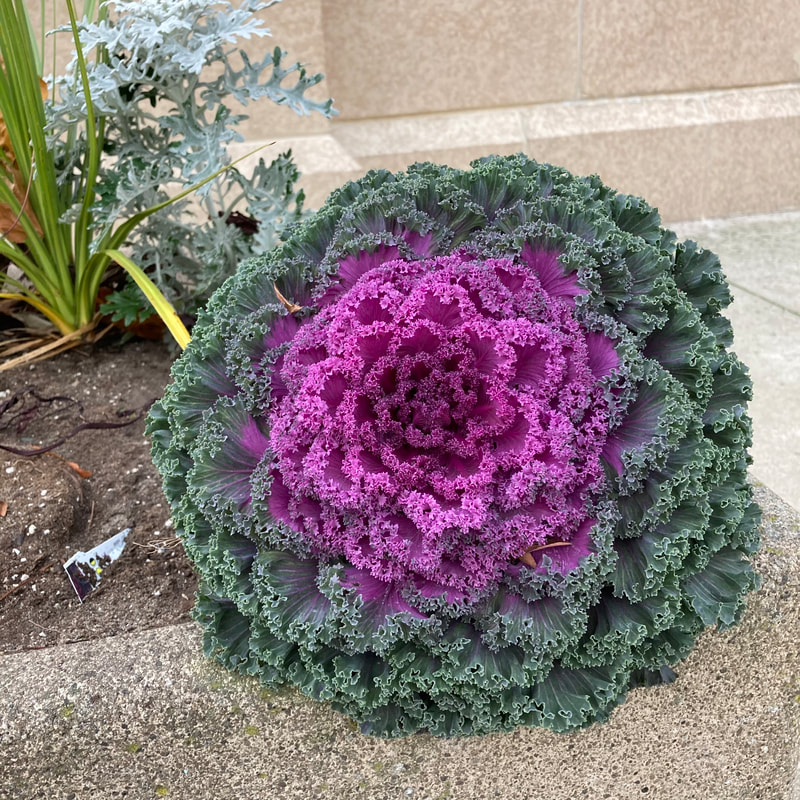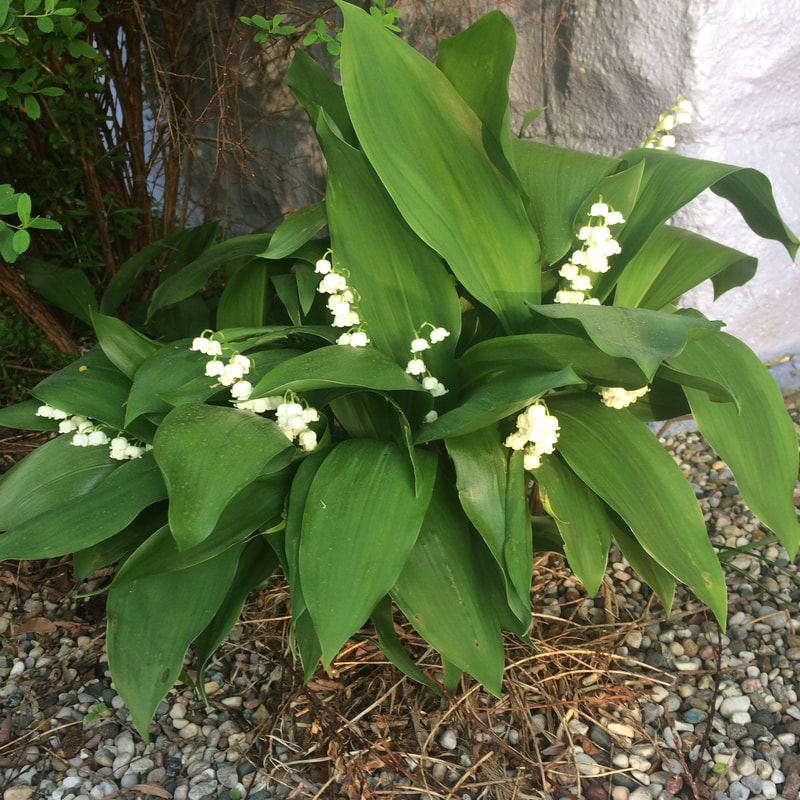|
Photo and article by Donna Iverson
I am what the French call a flaneur, someone who indulges in the art of strolling. I enjoy walking the neighborhood streets checking out people’s yards, gardens, window boxes, and potted plants. Occasionally, I encounter a real person and indulge in a short chat, at a safe social distance, of course. This fall and into the winter, my curiosity was drawn to what looked like colorful cabbages in flower pots along a city sidewalk. The snow was falling but these bright pink centered orbs seemed oblivious to the cold. On doing a little research, I found out that they were not cabbages at all but flowering kale. Although the difference between flowering kale and ornamental cabbage is only detectable by the shape of the outer leaves..... kale being curly and cabbage smooth. While the other flowers sharing the pots were withering and looking frozen, the flowering kale was thriving in December, in Michigan. And not only thriving but looking down right defiant. A member of the plant family Brassica, flowering kale is indigenous to Europe and is not a North American native. But doubt we have to worry about it becoming invasive. Seeds of flowering kale were first offered for sale in seed catalogs in 1936. It is best grown, by buying plants at your local garden store or nursery. It is hardy to zone 2, tolerating winter temperatures down to 5 degrees. While it thrives in containers, it is also a good edging plant in your landscape or along the borders of gardens. It grows to be about 12 to 18 inches tall and looks more like a flower then a vegetable. And although you can eat it, it is bitter compared to its culinary cousins, regular kale and cabbage. Flowering kale comes in a variety of shades, including red, pink and purple. Unfortunately, both deer and rabbits love it. It likes a lot of sun and is not fussy about soil type. A biennial, decorative kale flowers the second year so most people grow it as a summer annual.
0 Comments
Photo and article by Donna Iverson Before the end of the year, 35 million poinsettia will be sold for holiday decorations in this country, As the Christmas season approaches, poinsettias will grace home tables, porches, hospital rooms, nursing homes, TV sets and church altars. Indigenous to Central America, its bright red flowers are easily recognizable from a distance as they seem to shout out for your attention. But in our great grandparents' day, it wasn’t the poinsettia that was cherished as a Christmas flower. It was the small diminutive lily of the valley with its dainty bell-like white flowers and sweet scent. Back around the turn of the last century, white flowers were favored during the winter holidays. In addition to lilies of the valley, there were cyclamens, white chrysanthemums, and violets. These plants contrasted nicely with red-berried holly branches. A woodland flowering plant indigenous to Northern Europe, lily of the valley found its way first to New England and then to the Midwest. There it was sometimes called May bells, because that is when it bloomed. Today however, it sometimes blooms as early as March during mild winters. Once established, it spreads readily by rhizomes, and will grow under trees and in the shade. As a child, I loved its intoxicating scent whenever I visited my grandmother who had planted it along the side of her house leading to the back door. Christian Dior also valued the scent turning it into one of his best selling perfumes, introduced in 1956. A long lived cut flower, lily of the valley was often used in sweet-smelling bridal bouquets. Reportedly, it was also woven into wreaths and wrapped around the necks of passengers boarding the Titanic. Mentioned in the Bible many times, lily of the valley pops up in folklore where it is often associated with bad luck and death. And in fact, it’s red berries are highly toxic to humans and animals. A member of the asparagus family, lily of the valley kits are sold today in many holiday catalogs. There you can purchase kits to force lily of the valley plants to grow inside your home. The kit usually comes with a pot, soil medium and pips, which are planted, watered and placed on the window sill. It takes about four weeks for them to sprout and blossom. It is a real floral treat in the middle of a long Michigan winter. In the spring the plant can be transplanted outdoors where it will grow in your garden. Of course if you already have lily of the valley in your yard, you can dig up some pips, plant them in a pot and place on your window sill and accomplish the same thing for free. |
Archives
July 2024
Categories |


 RSS Feed
RSS Feed